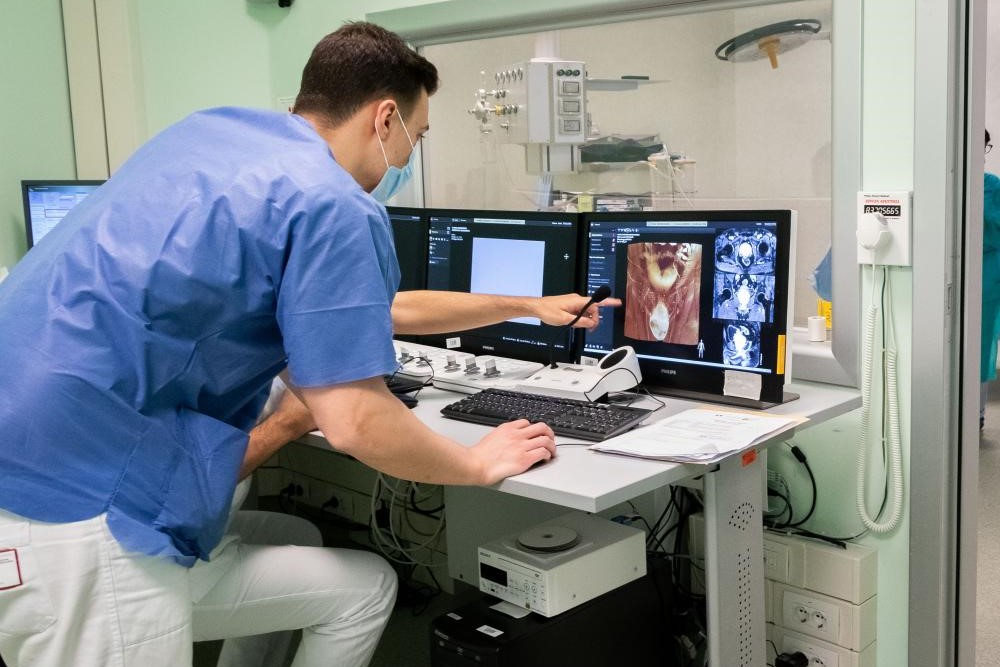
Enlarged prostate? Treating benign prostatic hypertrophy BPH goes soft
Stents, micro-bullets and water vapour: ‘low impact’ procedures to treat benign prostatic hypertrophy (BPH)
From temporary stents to prostate embolisation, from the energy of water vapour to micro-bullets to be applied to the gland: these are some of the latest surgical techniques created to minimally invasively combat “prostate enlargement”, a condition which in technical terms is called benign prostatic hyperplasia (BPH) and which can have repercussions on the complicated mechanism of urination.
BPH, benign prostatic hypertrophy, is very common, with about half of all men between 50 and 60 years of age affected
The incidence increases progressively with age (up to 90% of men over 80 years old).
The increased size of the gland creates an obstruction, leading to urinary symptoms such as a weak stream or a feeling of a full bladder even immediately after urinating.
Hypertrophy can also lead to the need to urinate several times, often going to the toilet or getting up at night because of urgency or difficulty in holding your urine.
It may also be difficult to start urinating, require prolonged efforts to urinate, or be incontinent.
The occurrence of these problems is one of the reasons to see a urologist.
If BPH is not monitored and treated by a specialist, it can lead to various complications: in addition to the risk of bladder dysfunction, it can lead to urinary infections, fever and stone formation, and even possible kidney damage.
Prostate hypertrophy: treatments
There are many options for the treatment of BPH (phytotherapeutic, pharmacological and surgical treatments), and these should be proposed to patients according to the severity of their complaints.
Some have side effects and it is therefore essential that the urologist, where possible, proposes solutions in line with the situation and the patients’ expectations.
Endoscopic resection of the prostate (TURP – transurethral prostate resection), nowadays also performed with different types of lasers (holmium, green, tullium, etc.), has been the surgical treatment of choice in recent decades.
It is generally performed under spinal or general anaesthesia, requires 3-4 days of hospitalisation and the placement of a bladder catheter for a few days post-operatively.
However, the technique can have side effects, the main one being retroaculation (lack of sperm discharge after orgasm).
Cases of urinary incontinence and erectile deficit have also been reported.
To overcome the limitations of this procedure, many minimally invasive procedures have been designed and validated over the years, bringing many advantages.
First of all, they can be performed on an outpatient basis or with a short hospital stay (return home the same day or the next day).
In addition, the recovery time after the procedure is generally faster.
Retroaculation is less likely or even avoided with minimally invasive treatments, which can offer symptom relief and sometimes resolve symptoms.
In other cases, these techniques can act as a ‘bridge’ to postpone more invasive treatments until later years.
One of the new generation techniques is the prostate urethral lift (PUL).
The procedure uses a cystoscope to release small implants, similar to pins, into the prostate.
These implants pinch the prostate tissue and compress the enlarged prostate so that the urethral obstruction is reduced and urine flow is improved.
No cuts are made and no heat sources are used to destroy or remove the prostate tissue.
The procedure is very quick (less than an hour) and you can usually go home the same day.
It can be performed under local or general anaesthesia.
Another recently introduced technique is thermal water vapour therapy.
This treatment uses steam to destroy prostate cells that compress the urethra.
In a device, sterile water is heated to just above boiling point and a precise dose of steam is then ‘injected’ into the prostate with a small needle.
The release of this thermal energy causes rapid cell death, thus leading to prostate shrinkage.
The treatment is carried out under local anaesthesia, which may be accompanied by sedation.
A temporary stent is used instead of the temporary implantation of a nitinol device.
This device is introduced endoscopically and remains in place for five days, the average time required to enlarge the prostate urethra.
Read Also:
Emergency Live Even More…Live: Download The New Free App Of Your Newspaper For IOS And Android
Male Pathologies: What Is Varicocele And How To Treat It
Continence Care In UK: NHS Guidelines For Best Practice
Enlarged Prostate: From Diagnosis To Treatment


